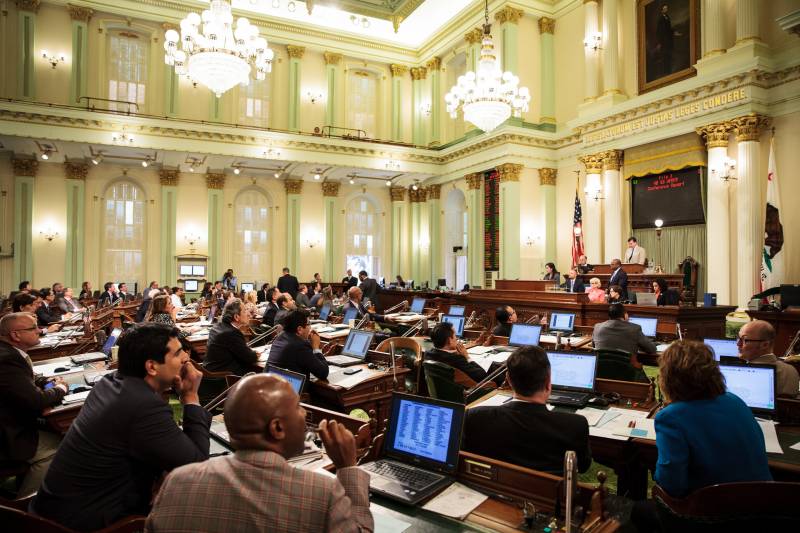The $4.2 billion price tag could grow as lawmakers discuss adding more projects for things like buying solar batteries and fuel cells to keep the lights on at nursing homes and other vulnerable sites when utility companies preemptively shut off electricity to prevent wildfires during windy conditions.
“We’ve been really good about investing in suppression — in other words, firefighters and helicopters,” said Democratic Sen. Henry Stern. “We haven’t done that good of a job in prevention.”
Passing the Legislature would be the just first step for the climate bond because California can’t borrow the funds unless voters approve it. Voters could be weary of more bonds because the state has borrowed so much money in recent years that officials are having trouble spending it all. Of the $150 billion in borrowing authorized by voters in recent years, more than $34 billion has yet to be spent.
“We cannot spend money until projects are ready,” state Treasurer Fiona Ma said. “Sometimes it takes 10-plus years to spend money that is authorized in a bond act.”
Plus, voters will be asked in March to borrow another $15 billion to build more public schools, increasing the chances of spending fatigue — especially as California’s economy continues to grow, producing record budget surpluses.
Supporters in the Legislature, including Senate President Pro Tem Toni Atkins, recognize the potential peril of asking the public to add to the state’s debt. But they believe residents of climate-conscious California will embrace borrowing aimed at protecting the environment.
“I think if members of the public know that this money is going to issues around climate change, they care about that,” Atkins said.
Some Republicans are skeptical, including Assemblyman James Gallagher, whose district includes the town of Paradise, which was mostly destroyed in the deadly 2018 Camp Fire.
Instead of borrowing more, Gallagher said the state should use some of the billions of dollars generated every year by its cap-and-trade system to reduce wildfire fuel by better managing forests. He also wants to temporarily block a state law that requires utilities to buy more expensive solar and wind power and upgrade their equipment to make it less likely to spark wildfires during windstorms.
Gallagher questioned whether borrowing is the best practice “considering the amount of debt we have right now.”
“There are existing dollars in government that I think we could just better target,” he said.
Other proposals in legislative limbo include a controversial bill by Sen. Scott Wiener to boost housing density near public transportation by allowing apartment buildings in areas currently zoned for single-family homes. Atkins said Wiener is working on some amendments around “local flexibility” that she said might help the bill make it through the Senate.
If it does, it could find a receptive audience in the Assembly.
“I don’t like to comment on pending legislation, but I definitely think there is value in increasing housing density along certain corridors,” Assembly Speaker Anthony Rendon said.
Potentially overshadowing pending legislation is the fate of Pacific Gas & Electric Co., the nation’s largest electric utility, which filed for bankruptcy after facing up to $30 billion in potential damages from wildfires started by its equipment.
Democratic Gov. Gavin Newsom has suggested a potential state takeover if the troubled utility cannot emerge from bankruptcy before the next wildfire season. But legislative leaders have balked at that idea.
Atkins said she has concerns about doing anything that lets PG&E off the hook.
“Then it just transfers the liability to the ratepayers and the taxpayers,” Atkins said. “Isn’t that what we are trying to avoid?”
Other topics generating interest include proposals addressing housing and homelessness, which Republican leaders in both houses say are key goals.
“We’re looking at real solutions that are going to make a difference in Californians’ lives,” Republican Senate Leader Shannon Grove said.
